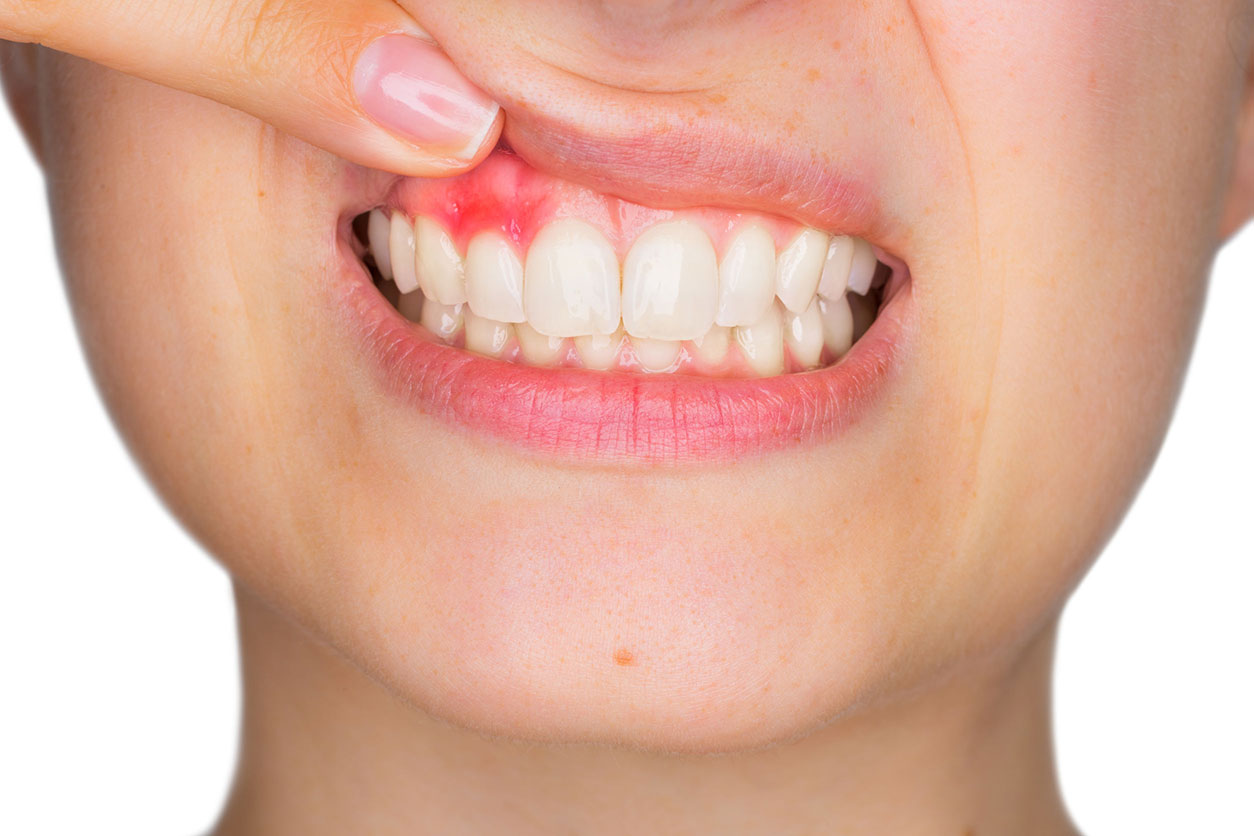
Periodontology
Gum care
Periodontology is a discipline of dentistry that deals with the care of all the tissues around and supporting the tooth (gum care):
the gum, the bone, the tissue that surrounds the dental root (called "cementum") on which the ligament (called "alveolo-dental") that connects the tooth to the bone is attached.
PERIODONTITY
Periodontitis, commonly known as periodontitis, is characterized by the destruction of the tissues that anchor the teeth, i.e. the jawbone, gums and cementum (the periodontium).
WHAT CAUSES PERIODONTITIS?
The mouth is in permanent contact with the outside environment. A large number of microbes are therefore permanently present in contact with the teeth and gums. This is called dental plaque. Sometimes, the amount of microbes and their virulence are so great that they destroy the tissues that support the teeth. This is the beginning of periodontitis.
As periodontitis progresses, a periodontal pocket forms under the gum and quickly becomes a receptacle for a large amount of plaque, i.e. bacteria that infect the gum. Over time, this plaque mineralizes to form tartar, which is a solid deposit that is very porous and in which other bacteria become lodged. These bacteria, which are aggressive to the periodontium, cannot be dislodged with a simple brushing. This is the beginning of the "vicious circle" of infection of the gums, which gradually aggravates the loosening of the teeth.
GUM CARE: THE MEANS OF ACTION
LOCAL DISINFECTION TREATMENT
It is generally between the teeth that the most virulent bacteria are present. Interdental disinfection must be performed daily in addition to general disinfection of the teeth and gums. Two instruments are at our disposal:
These instruments are the most effective and easiest to use. However, they are relatively thick and therefore will not fit everywhere.
When the brush cannot be inserted into the interdental notch, dental floss should be used.
RESTORING GINGIVAL TIGHTNESS WITH GINGIVAL CURETTAGES
Curettage is the first technique considered for treating periodontal disease. This method is not very aggressive and is generally effective.
CURETTAGE GOAL
Dental curettage is a non-surgical procedure (the gums must not be loosened) that cleans the surface of the tooth roots and the gums in depth. They consist of removing soft (plaque) and hard (tartar) deposits that have accumulated on the surface of the teeth.
The objective is to disinfect the gum and dental tissues and to allow the reduction or even closure of periodontal pockets by re-adhering the gum to the biocompatible tooth surface. However, when the RSD of all the teeth is not sufficient to stabilize the periodontal disease, other therapies, particularly surgical ones (sanitation flaps), can then be considered.
HOW ARE CURETTAGE PROCEDURES PERFORMED?
Under local anaesthesia, the use of ultrasound inserts and manual curettes allows for the precise location and removal of tartar deposits, but also bacterial deposits and bacterial toxins that contribute to the exacerbation of periodontitis from the tooth surface.
The vibrations of the ultrasounds, and the irrigation solutions used (iodine solution and mouthwashes) contribute to the elimination of bacteria, bacterial toxins and residual tartar from dental surfaces and infiltrated gum tissue. The number of sessions varies depending on the patient, the severity of the periodontitis and the number of teeth affected.
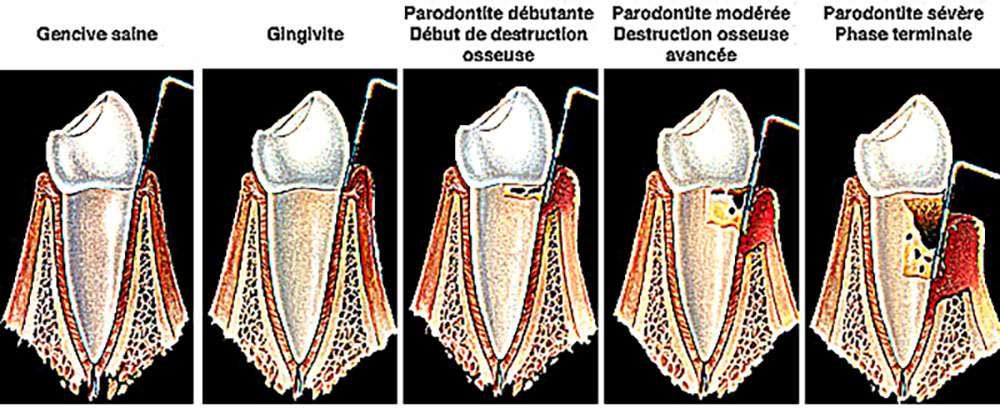
GUM GRAFTS
Overly vigorous brushing, malocclusion, bruxism or sometimes orthodontic treatment can cause gum retraction. At an advanced stage, these can cause pain, aesthetic discomfort (visually long tooth), or even endanger the preservation of the tooth on the jaw. It is then possible to perform a gingival graft, which consists of removing a small amount of gum from the palate under local anesthesia and adding it to the area where it has disappeared. In the area of the palate where the gum has been removed, the gum will grow back on its own within a few weeks. These techniques allow a longer conservation of the teeth and sometimes an improvement of the aesthetic aspect of the gums.
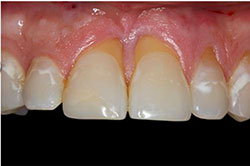
Before
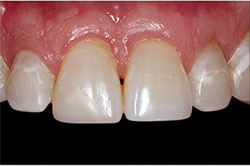
After
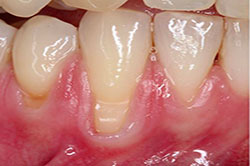
Before
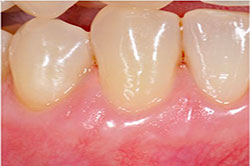
After


